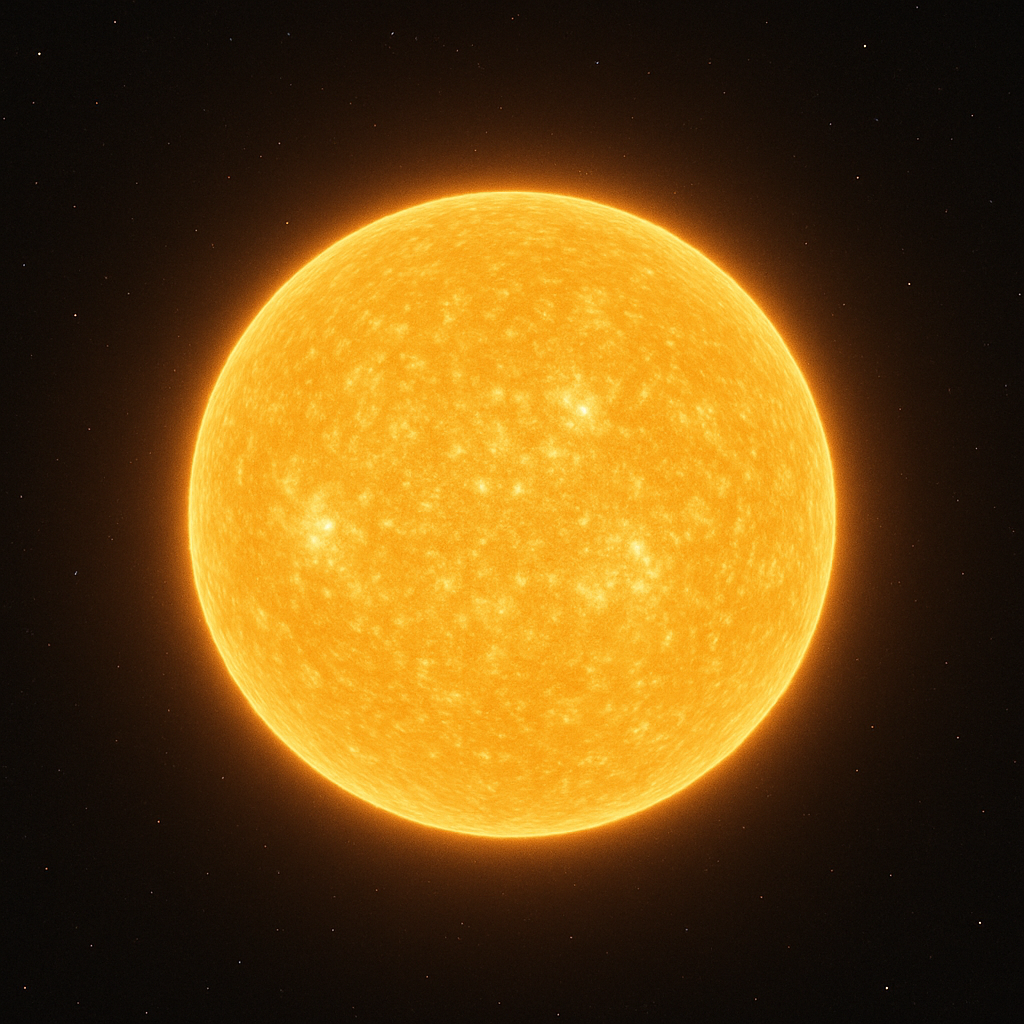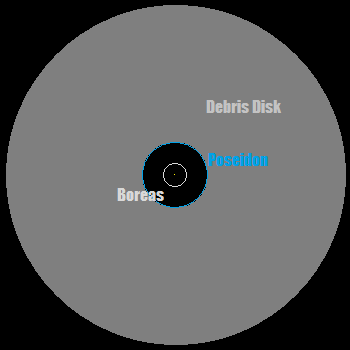Tau Ceti
Page Under Construction (Update November 2025) |
|---|
Tau Ceti is a solitary star within the constellation Cetus (as seen from Earth).The Tau Ceti star system is notable for having a large and massive debris disk. So despite being a metal-poor star when compared to our Sun, this system is richer in accessible monopolium.
Planets and Major Moons
Tau Ceti I: Hephaestus
Main Article: Hephaestus
A "hot Mars," the iron-rich world is baked by Tau Ceti. The crust of the planet is a single plate, with the core having cooled off eons ago losing its magnetosphere. As a consequence, the planet lost most of its atmosphere to stellar winds. Hephaestus cannot become tidally locked to its star, due to tidal forces from its large moon, Arges. However, tidal forces from its star has slowed its rotational period such that it is tidally locked with its large moon.
- Classification: Hot Terrestrial World
- Orbital Distance: 0.18 AU
- Surface Temperature: +210C
- Surface Gravity: 1.19g
- Radiation: High (Ultraviolet, Solar, and Cosmic)
- Atmosphere: Trace Gasses
- Satellites: 1 (Arges)
- Population:
Tau Ceti II: Zeus
Main Article: Zeus
This gas giant migrated inward, likely due to planetary shuffling as the system formed eons ago, related to the size of the outer debris disk. Due to extensive water vapor clouds, the gas giant is subject to a strong greenhouse effect (offsetting its increased albedo), which in addition to heat from the core, raise the temperature some 100 degrees above its equilibrium temperature of -59C.
The planet has three large moons, one of them a carbon moon (like Saturn's moon, Titan). Since the mass of Zeus is between that of Saturn and Neptune, it is conjectured that the large moons Zeus now has were captured as the planet migrated inward. This would have caused many of its native moons to be ejected, leading to the small population of moons today.
- Classification: Water Jovian World
- Orbital Distance: 0.50 AU
- Surface Temperature: +41C
- Satellites: 9 (Olympia, Demeter, Apollo)
- Population:
Tau Ceti III: Boreas
Main Article: Boreas
Given the planet's relatively high density, it is conjectured that as Zeus migrated inward, this rocky world was displaced outward, occupying its position right at the "snow line" for Tau Ceti. Being at the snow line while not being a gas giant demonstrates that this world formed much farther inward. This planet is far too cold for potent greenhouse gasses like CO2 to be anything but solid (or "ices"). Hence, a nice crisp blue nitrogen atmosphere covers the planet.
- Classification: Ice Terrestrial World
- Orbital Distance: 3.5 AU
- Surface Temperature: -149C
- Surface Gravity: 0.99g
- Radiation: High (Ultraviolet)
- Atmosphere: 0.82 atm (96% N2)
- Satellites: None
- Population:
Tau Ceti IV: Poseidon
Main Article: Poseidon
Given the amount of material in the debris disk in this system, it is conjectured that Poseidon formed very closely to where it orbits today, around Tau Ceti. Hence, it and perhaps Hephaestus are the only two worlds in this system unaffected by planetary shuffling as the system formed eons ago. This world acts as a "gravitational shepherd" to the Debris Disk. Its interactions with the Debris Disk has left Poseidon with very few moons.
- Classification: Ice Jovian World
- Orbital Distance: 9.84 AU
- Surface Temperature: -182.6C
- Satellites: 12
- Population:
Tau Ceti Debris Disk
Main Article: Tau Ceti Debris Disk
The origin of the debris disk is debated, but the disk is some ten times more populated than the asteroid belt and Kuiper belt in our own Solar System and monopolium-rich.
- Orbital Distance: 10 AU to 50 AU
- Surface Temperature:
- Radiation: High (Ultraviolet, Solar, Cosmic)
References
General Physics
Original Usenet Physics FAQThe Physics Stack Exchange
Atomic Rockets by Winchell Chung
General Astronomy
Stellar CatalogAtlas of the Universe
Magnetic Monopoles
Short Primer on Magnetic Monopoles (Free 2017)Good Primer on Magnetic Monopoles (1984)
Extensive Research on Magnetic Monopoles (1983)
Tau Ceti
Distance: 11.9 light-years
Spectral Class: G8V
Age: 8 Billion years
Mass: 0.80 Suns
Radius: 0.79 Suns
Luminosity: 0.45 Suns
Surface Temperature: 5320K
Related Articles
Interstellar UtopianismMonopolium
Planets and Moons
Tau Ceti I: HephaestusTau Ceti I-1: Arges
Tau Ceti II: Zeus
Tau Ceti II-1: Olympia
Tau Ceti II-2: Demeter
Tau Ceti II-8: Apollo
Tau Ceti III: Boreas
Tau Ceti IV: Poseidon
Tau Ceti Debris Disk




